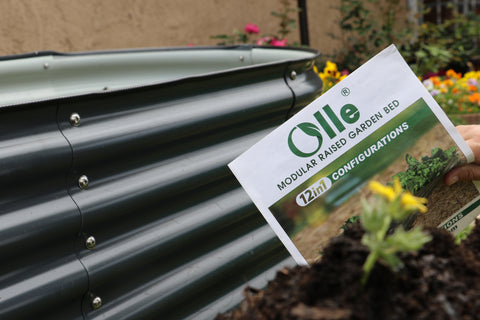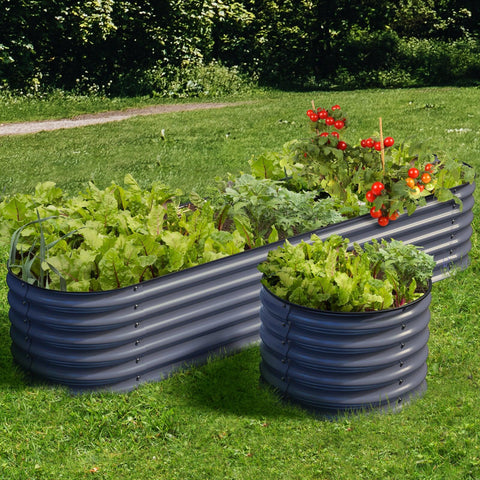Knowledge from Olle Garden Bed: Why Does My Soil Crack? Understand The Real Reason
Healthy soil is the basis for vigorous plant growth, so when the soil does not cooperate, it may be frustrating. Cracked soil will prevent the root from getting proper proportion of water and oxygen, so it is very important to understand the causes of soil cracking to repair it. The following content also has some reference value for raised garden beds.
When the soil contains a large amount of clay and is exposed to hot and dry conditions, the soil will crack. When the soil is wet, the clay will stick together, but when it dries, the clay will shrink and cause cracks that are almost impossible for the root to penetrate.
Clay is frustrating, but you can take some steps to improve the growing conditions of lawns and landscapes.
Healthy soil is the basis for vigorous plant growth, so when the soil does not cooperate, it may be frustrating. Cracked soil will prevent the root from getting proper proportion of water and oxygen, so it is very important to understand the causes of soil cracking to repair it.
When the soil contains a large amount of clay and is exposed to hot and dry conditions, the soil will crack. When the soil is wet, the clay will stick together, but when it dries, the clay will shrink and cause cracks that are almost impossible for the root to penetrate.
Clay is frustrating, but you can take some steps to improve the growing conditions of lawns and landscapes.

The most common type of organic matter is compost, but depending on the specific characteristics of the soil, there are other options:
Amazing before and after results
- Compost manure. This is stool that has aged for at least 1 year. Compost manure has a high nitrogen content, so excessive addition may burn plants.
For soils in humid climates, this may be a good correction, as nitrogen may leach or run off, but you need a larger correction to increase porosity.
- Wood chips. Brown, carbon rich materials, such as sawdust, are ideal for increasing porosity. However, adding plant materials directly to the soil can pull nitrogen away to help the decomposition process, thereby reducing the available nitrogen of established plants.
If you have a piece of bare clay, you can add heavy brown materials, such as wood chips. After a few years, the nitrogen content should return to normal, and you can start planting.
- Worm casting. This is a wonderful and effective fertilizer, but it is not a good choice to improve the porosity. Most clays have high nutrient content, but they are too dense for plants to reach them.
Worm castings are a perfect amendment for mature plants to promote root growth, but they do not improve porosity.
- Grass dust. Planting green, nitrogen rich materials into clay may increase porosity faster than adding brown, carbon rich materials such as sawdust.
However, the original green material will significantly reduce the nitrogen content before decomposition, and will not increase the porosity as the brown material does.
- Cover crops. You can plant large areas of clay with mustard, clover, or other mulch crops, and then cultivate them to help increase the organic content and decompose the top layer of the soil.
Covering crops will grow dense roots, helping to prevent large pieces of clay. When you mow or cultivate them, organic materials that help improve porosity will be added to the top growth.
The aim of adding organic matter is to increase porosity, but some homeowners try to achieve the same end result by mixing sand into clay.
If you add sand and water to clay, you will get concrete. Sand will not improve clay.
If you have a piece of bare clay, you can cultivate a lot of organic matter and let it decompose. Do not cultivate wet clay or dry clay; Wait until the soil is moist but not saturated. Cultivate the soil only to the extent absolutely necessary:
- Cultivating the soil when it is too wet removes oxygen and produces a thicker paste that is worse than at first.
- Working when the soil is too dry will cause fine dust to stick together with the first rain.
- No matter what the soil moisture is, long working time of the soil will lead to oxygen loss and a more dense soil structure.
If there is mature lawn or landscape in your clay, you must add organic materials without disturbing the grass and plant roots. You can do this through annual aeration and topdressing:
- Rent core aerators from late spring to early summer. These remove the soil core, thus opening up a small space for raking compost. Toothed aerators are not suitable for topdressing because they create very small holes.
- Set the aerator to the densest pitch the lawn can handle. Inflate the lawn.
- Calculate how much compost is required for topdressing. Multiply the length of the yard by the width to determine square feet, and then multiply it by. 041 to determine cubic feet. Divide cubic feet by 27 to find how many cubic yards of compost you need.
- Order bulk compost from the garden supply center and rake it on your lawn to fill the holes left by the aerator.
Repeat this process every spring, slowly adding organic matter into the clay to prevent cracking.
The aim of adding organic matter is to increase porosity, but some homeowners try to achieve the same end result by mixing sand into clay.
If you add sand and water to clay, you will get concrete. Sand will not improve clay.
If you have a piece of bare clay, you can cultivate a lot of organic matter and let it decompose. Do not cultivate wet clay or dry clay; Wait until the soil is moist but not saturated. Cultivate the soil only to the extent absolutely necessary:
- Cultivating the soil when it is too wet removes oxygen and produces a thicker paste that is worse than at first.
- Working when the soil is too dry will cause fine dust to stick together with the first rain.
- No matter what the soil moisture is, long working time of the soil will lead to oxygen loss and a more dense soil structure.

If there is mature lawn or landscape in your clay, you must add organic materials without disturbing the grass and plant roots. You can do this through annual aeration and topdressing:
- Rent core aerators from late spring to early summer. These remove the soil core, thus opening up a small space for raking compost. Toothed aerators are not suitable for topdressing because they create very small holes.
- Set the aerator to the densest pitch the lawn can handle. Inflate the lawn.
- Calculate how much compost is required for topdressing. Multiply the length of the yard by the width to determine square feet, and then multiply it by. 041 to determine cubic feet. Divide cubic feet by 27 to find how many cubic yards of compost you need.
- Order bulk compost from the garden supply center and rake it on your lawn to fill the holes left by the aerator.
Repeat this process every spring, slowly adding organic matter into the clay to prevent cracking.
